Growing Citrus Trees Indoors
Here in California, or if you live in Arizona or Texas or Florida, you get to grow citrus in your backyard, year round. For most of the rest of the nation, though, that would be a challenge. A challenge to the point where maybe you have to bring it indoors for the winter. That could even be true here in California if you’re growing a citrus variety, such as lime trees, that can lose their fruit when the thermometer drops to 32 degrees, which happens here in the Central Valley on a regular basis. Maybe you have a really nice greenhouse to grow citrus. Combined with a heater to keep temperatures above 40, that would be ideal.
When it comes to tips for growing citrus, we turn to Lance Walheim, who has written several books about citrus. His titles include, “Citrus The Complete Guide to Selecting and Growing More Than 100 Varieties," and “All About Citrus and Other Subtropical Fruits.” He also was one of the contributing editors to the Sunset Western garden book that has a very good citrus section.
Walheim says indoor citrus growers need to choose the right varieties to be successful.
“I have met many people who have been growing Meyer lemons and kumquats back East in very cold climates for 30-40 years, so people can be successful about it,” says Walheim. “But make sure you choose the right variety. I think you need to try growing citrus that is highly acidic. One of the best ones is the Meyer lemon tree. It's a very precocious tree that loves to bloom, and doesn't need a lot of heat to ripen. And it's a small tree so it can grows perfectly well in a container. All the kumquat hybrids, including Calamondins, are perfect for indoors. Also, they have smaller fruit that ripens quicker. And again, they have a propensity to rebloom often.” And despite the reputation of lime trees being very cold sensitive, Walheim says one lime variety, in particular, makes for a good household specimen. “Bearss lime is a good variety to try indoors,” says Walheim.
And what about the option of letting your citrus trees enjoy the warmer months outdoors and bringing them indoors for the winter? Is that viable? “It certainly is,” exclaims Walheim. “The key thing is to provide a transition zone, if moving it back and forth. When you're moving a citrus tree from indoors to outside in the late winter or early spring, or from the outside to the indoor conditions in November or December in the Central Valley (or earlier in colder climates), you're really changing things for that tree. The humidity levels outside could be over 50-60%. You take it inside where the house is heated, you're dropping down to 10% humidity. So those are dramatic changes, and they're going to affect the tree as will the changing light conditions. So what I really recommend, whether you're going inside or outside as you provide a transition period, is to do it gradually.”
The process involves moving that tree every day for awhile, so make sure the plant is in a container that isn’t too big for you to move, perhaps 15 to 20 inches across at the top. Better yet, mount the container on a heavy duty small furniture dolly to roll the plant inside and out.
“If you're taking the tree outside, make sure it is in a shady spot during this transition period, it may take several weeks,” says Walheim. Give them a shady condition several hours a day, and then move them back inside for the night. Move them to more outside light gradually.”
Walheim says the more critical transition is moving a containerized citrus tree to the indoors for the winter in colder climates. “You certainly don't want them next to a heater vent, you want to do whatever you can to increase the humidity, which means they can be placed on a tray with some rocks over it where you can add water to the base and increase humidity around the tree,” says Walheim. “Give them as much light as you possibly can. But what's going to happen, especially with a Meyer lemon, you're going to bring them indoors, and they're going to drop their leaves because of the lower humidity levels as less intense light. After that, the next thing that might happen is that they're going to bloom. The stress of all that it's going to make them bloom, so you're going to get some flowers, they probably won't set fruit indoors, but you will start getting some new growth. Make sure that you are doing a good job to maintain the water in the pot. Don’t overwater or underwater. And then they'll start to grow again.”
Other Tips from Walheim regarding growing indoor citrus:
• “They are widely adapted to soil types, so I think that most potting soils, the quality potting soils, are probably going to be okay. It's more important that we make sure we get those fertilizer nutrients into the soil.”
• “I would make sure I used a good citrus fruit food or another fertilizer that had the micronutrients in it of zinc, iron and manganese. But you are hoping that that tree is going to grow when it's inside unless you're totally shutting it down in a cold greenhouse. But I would fertilize lightly.”
• “You want to want to make sure that you water thoroughly, so the whole root ball gets wet. But you don't want that water sitting around in the basin. So whatever you can do to drain it out or put something in there to keep the soil out of the water constantly. The quickest way to kill a citrus tree is to have the bottom of that container continuously soaking wet. You're just not going to get the drainage, they need air for the roots.”
• “I know a lot of people that use supplemental lighting and get very good results. check around for the type of lights that you can get. Use lights especially if you're going to be growing your citrus trees in an area of the house where you're not getting enough light and they're a little out of the way.”
• “Leaf burn can be an issue, especially if you go into a dramatically drier area. And if you are not, if you've allowed salts to build up in the soil ball of the tree, and then you bring it inside, the lack of humidity is going to cause leaf burn and eventually leaf drop. I recommend before you bring the trees inside, do a preventative insect control spray of some kind, whether it's insecticidal soap or neem oil, whatever you're going to do, but also make sure you water the tree really well before you bring it inside. Let it sit out there and drain for a couple days and leach any salts that are in the soil out. That's a good practice with any house plant that you bring outside and then eventually bring indoors and watch the weather. Don't get caught with your tree outside before it gets too cold or if a late spring frost hits. Watch out for that. Get them inside if you have to.”
The University of Minnesota has more Indoor Citrus Growing Advice:
Growing and caring for your citrus plants
Growing citrus plants is not difficult if you can meet these requirements.
Citrus plants grow best indoors with 65° days, dropping five to ten degrees at night.
They need some direct sun for at least part of the day.
During the summer, put citrus plants outside to take advantage of better growing conditions and extra light.
Let the plants acclimate to sunny conditions by putting them in the shade of a tree or the north side of the house for the first several days.
Make sure they have plenty of direct light once they're used to being outside.
Get them used to lower light at the end of the summer by keeping them in a shady place for a week or so before bringing them back indoors.
Use the right potting mix and fertilizer
Since citrus plants prefer acid conditions, use peat in the potting mix to help keep the pH down.
Use about one-third sterile potting soil, one-third perlite or vermiculite, and one-third peat or other organic matter in the potting mix.
Use a fertilizer made specially for acid-loving plants. Mix at half the recommended strength.
Fertilize the plant only when it is actively growing, usually April through August or September.
Watch for pests
Scale, whitefly and spider mites are some of the more common pests of citrus.
Make sure the leaves are kept clean by periodically washing them, especially before you bring the tree inside for the winter.
Pay special attention to the undersides as well as the tops of leaves.
To treat insects, check garden centers for products currently approved for use on houseplants.
Pollinate for fruit
You may have flowers, but still have difficulty getting fruit to form on your citrus plant. This may be due to lack of pollination.
Insects pollinate citrus outside. Since these are not usually present in the home, shake the flowers gently or flick them with your fingers to spread pollen from flower to flower.
Thank you for listening to the Garden Basics with Farmer Fred podcast! It’s available wherever you get your podcasts. Please share it with your garden friends.
As an Amazon Associate, I earn from qualifying purchases from some of the underlined links in the newsletter. This is how I am trying to keep this a free newsletter. And as long as you buy whatever you want from Amazon using any of those links to get into the Amazon site, I get a few pennies. Thank you.
Thanks for Subscribing and Spreading the Word About the Beyond the Basics: The Garden Basics with Farmer Fred newsletter, I appreciate your support.
Fred Hoffman is also a University of California Cooperative Extension Master Gardener in Sacramento County.




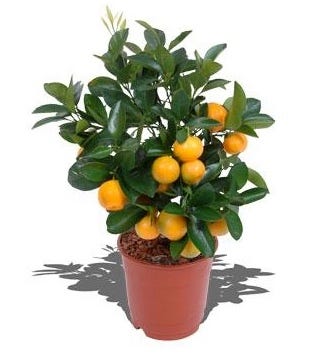


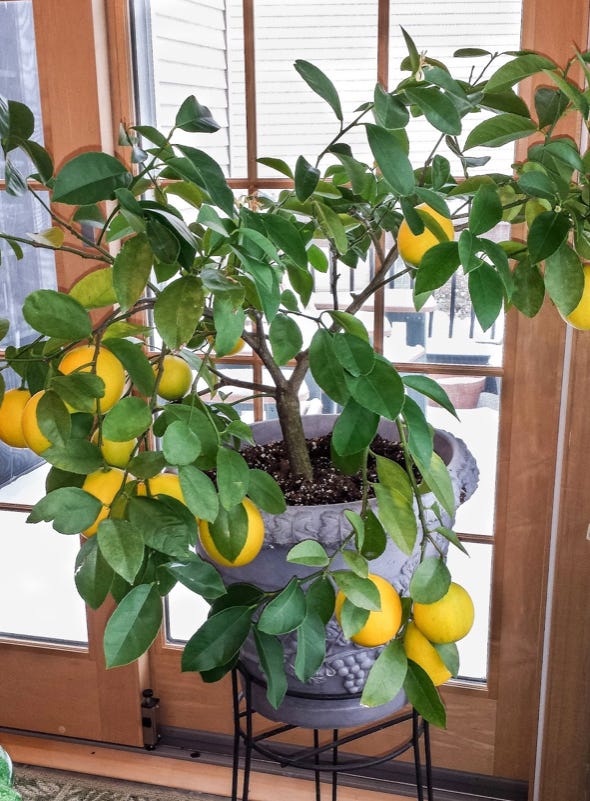


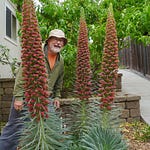

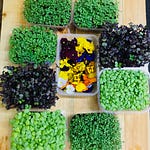
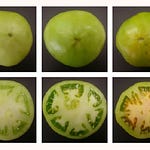

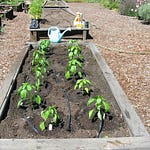
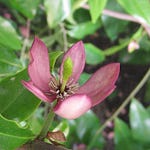
Share this post